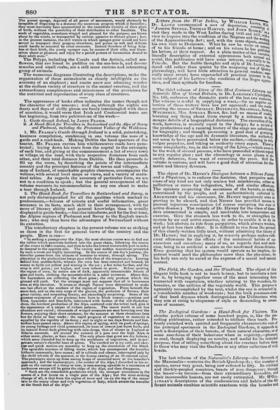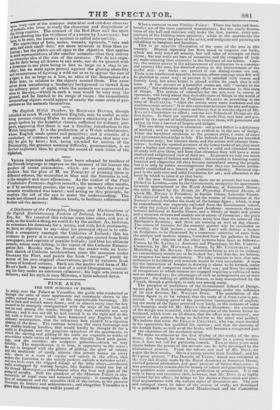The last volume of the Naturalist's Library—the Seventh of the
Mamrnalia—contains the British Quadrupeds ; the number of species, never very great, being now reduced to fifty. In civilized and thickly-peopled countries, beasts of prey disappear; though the lesser—as vermin—from their extraordinary fecundity, and their inaccessible haunts, are not easily extirpated. Mr. WG1.1- LIVRAY'S descriptions of the conformation and habits of the M. ferent animals combine scientific exactness with the broader and To re lively view of the amateur natuialist and out-door observer „lenimals, who loves to study the character and dispositions of the living creation. The account of the Red Deer and the sport lifeer-shooting has the vividness is apicture by LANDSEER : but here to be sure, the hunter s instinct s called into activity. Ti,o engravings of bats,,,moles, weasels, squirrels, " rats and row, and such small deer, are more accurate in form than co- louring; but the plates are all open to the objection that applies to most representations of the smaller animals—that they convey an erroneous idea of the size of the creature. We do not stipu- late for their being all draw in to one scale, nor do we quarrel with dormouse in one plate being n fact as large as a stag in an- other; but we must again protest against the glaring absurdity and incorrectness of figuring a wild cat so as to appear the size of a tiger, a fox as large as a lion, an otter of the dimensions of a Polar bear, in relation to the objects around them. The error arises from introducing a landscape background as viewed from the ordinary point of sigh. t, while the animals are represented as close to the eye,— which such a case would be very near the ground, and be limited in its range of vision : the immediately surrounding objects would appear of nearly the same scale of pro- portions as the animals themselves.



























 Previous page
Previous page